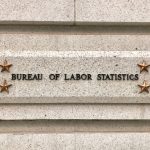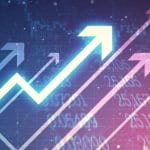Investment In Knowledge Is More Consistent Than Investment In Physical Capital by Eric Bush, CFA – Gavekal Capital Blog
Investors are familiar with the how the economy affects business investment. When the economic outlook looks the most dire, as in at an inflection point from recession to expansion, corporations slash business investment and focus on improving cash flows and liquidating inventories. As the economy begins to improve corporations begin to invest again. Sometimes they slowly begin to invest if the economic outlook is muted and sometimes they aggressively begin to invest if it looks like the economy is in the midst of a “v-shaped” recovery. Corporations continue to increase their business investment as the economy enters into a euphoric phase as the financial press touts another recession “is nowhere in sight”. At this stage, corporations are adding more and more capacity until all of sudden the bottom falls out beneath their feet and the economy once again moves from an expansion to a contraction. In sum, corporations tend to make investment decisions at exactly the wrong time. They are most aggressively increasing business investment as the economy tops out and they are most aggressively slashing business investment when the economy finds a bottom.
We saw this following the tech bust in the early 2000s as investment in traditional capital expenditures reached a cycle high in 2002 of $430 billion before falling to $362 billion in 2004*. This represented nearly a 16% reduction in business investment. This again happened during the Great Recession as capex topped out at $575 billion in 2009 before falling over 14% to $492 billion in 2010. We mention this because there seems to be another type of business investment, investments in innovation and knowledge, that seems to buck this trend. Corporations understand that it is investment in knowledge that creates differentiated new products as well as increases the quality of existing product lines. R&D investment made a high watermark in 2002 as well at $124 billion. However, it fell by less than $2 billion or little more than 1%, in 2003. By 2004, when capex was finally troughing, investment in R&D was making a new relative high at about $135 billion. In 2008, R&D peaked at $179 billion and eventually fell to $173 billion in 2010. This means that during the financial crisis investment in R&D fell by 3.4% compared to over 14% for traditional capex. Ultimately, it is encouraging to see corporations continue to invest in knowledge and innovation during times of economic turmoil. This should help bolster productivity over the long-run as knowledge investments tend to have a higher ROIC than investment in traditional capex.
*Data note: all data is in USD and is calculated for the GKCI United States Ex-Financials universe











